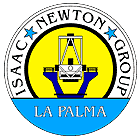
Hot Subdwarf Stars
and Related Objects
6-10 June 2005
La Palma, Canary Islands, Spain
 | Second Meeting on Hot Subdwarf Stars and Related Objects 6-10 June 2005 La Palma, Canary Islands, Spain |

Important dates Registration form Update registration Registration fee Accommodation Travel to La Palma Maps of La Palma
Scientific programme Poster presentations Participants Social programme Public programme Photos Proceedings Order Proceedings
Announcing poster SOC & LOC members About ING About NOT About La Palma La Palma weather
Pages last updated: 
|
Preprints of the proceedings can be downloaded here.
Photos of the conference are already online.
Scientific Rationale Hot subdwarf stars are extreme horizontal branch (EHB) stars and pre-white dwarf stars. The EHB stars are core helium-burning stars with extremely thin hydrogen envelopes, and form the majority of bright stars in surveys for extremely blue objects, where they are classified as subdwarf-B (sdB) stars. They also appear in the colour-magnitude diagrams of some globular clusters as an extension of the blue tail formed by classical horizontal branch stars, though it is not clear why some clusters show this feature and other do not. The pre-white dwarf stars are related to the sdBs, but have exhausted their capacity to burn helium in the core. Many of the brightest hot subdwarfs in the field are of this class, and they are classified as sdO stars. Hot subdwarf stars and their relatives are believed to be important contributors to the hitherto mysterious UV upturn phenomenon in early-type galaxies; and a comprehensive investigation on this issue is being performed by the Galaxy Evolution Explorer (GALEX). The formation of EHB stars remains, in general, a matter of debate. Recent results for Galactic EHB stars show that the majority are close binary stars, so mass transfer and mass loss due to interactions between the stars clearly play a role. EHB stars are an excellent tool for studying evolution in close binary stars. Some EHB stars shows p-mode pulsations with periods of a few minutes and some others show g-mode pulsations with periods on the order of hours. Asteroseismology can be used to measure fundamental parameters for these stars directly. Hot subdwarf stars are also a laboratory for studying the effects of diffusion, weak stellar winds, radiative levitation and gravitational settling. These processes are seen to affect the peculiar composition of their atmospheres and also play a role in the driving mechanism for pulsations and, perhaps, the subsequent evolution of the star. Topics
Organisation This workshop is organised by the Isaac Newton Group of Telescopes (ING) and the Nordic Optical Telescope (NOT), with additional support from the Excmo. Cabildo Insular de La Palma (local government) and the Patronato de Turismo de La Palma (tourist board). The conference will be held in the Real Club NŠutico in the centre of Santa Cruz de La Palma, La Palma, Canary Islands, Spain. See our accommodation page for recommended places to stay.
For information or questions, contact the Local Organising Committee: E-mail: subdwarf@ing.iac.es |